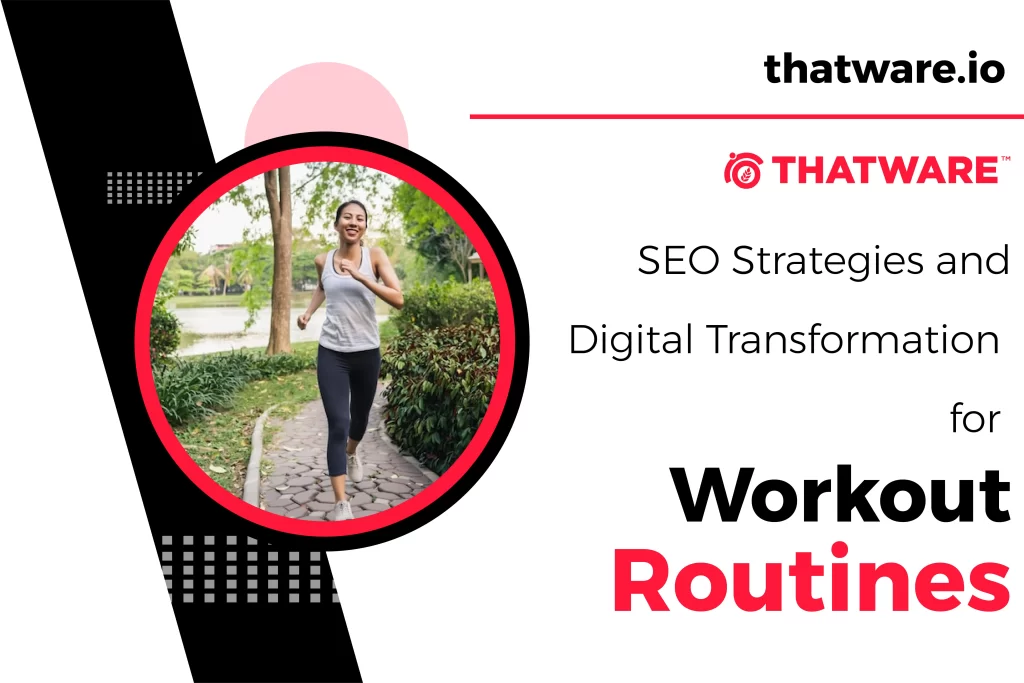You will only be able to realise your full potential if your fitness training business and its website have a prolific presence on the Internet. And besides, nearly 68 per cent of today’s online encounters start with searching about something in a search engine!
However, you may not understand where to start if you lack knowledge of search engine optimisation. There is no reason to stress.
How well does SEO work?
You’ll need to do several chores to guarantee that your website ranks well in Google. These include improving the content on your workout regimen fitness website depending on targeted keyword research and constructing inbound links to improve your article’s ranking and your website’s exposure.
- Rankings: This is used by search engines such as Google to determine where to position a certain web page in the SERP.
- Visibility: This indicates your domain’s prevalence in the result pages of search engines.
An SEO strategy is a technique for increasing the number of people that visit your fitness website using search engines such as Google. A successful SEO strategy includes the following elements.
- Off-page techniques: It generates inbound connections from other high-quality, specific sites.
- On-page strategies: These include intent-based keywords into your website’s content organically.
SEO and digital transformation strategy for workout routines:
Three things must occur for your workout website to rank at the top. The search engine must discover the pages on your site. Search engine bots must then crawl the page to grasp the themes and keywords on your site to start.
Finally, it must incorporate them into its index. It is a database including all of the stuff discovered on the Internet.
While this may sound straightforward, issues come from the notion that a web search crawler would not examine a website the same way you and others see it. We perceive text, images, colours, etc. The term “electronic commerce” refers to the sale of electronic goods.
As a result, you must ensure that the material on your training website is arranged so that Google can read and comprehend it. Below are a few of the most critical areas from an SEO perspective.
- Page speed:
The further your workout routine provides website seems to load. The further users will quit and go elsewhere. Google is aware of this and takes it into account.
- Simple URL structure:
Search engines despise complicated URL architectures and long word strings. Keep your URLs brief.
- Website links as well as navigation:
Search engines will explore your trainer site in the same way that viewers do by following links. Make sure the links and navigation are set to text-only.
- Duplicate content:
When there is too similar or identical information, Google requires clarification. Make sure your website does not include any duplicate material.
- Robots.txt files and sitemaps:
Search engines use sitemaps to determine which pages on your website to crawl and index. Conversely, a robots.txt file accomplishes the reverse, i.e. informs search engines what data not to index.
- Dead links and broken redirects:
A broken link will direct a visitor to a page no longer exists. A faulty redirect takes the visitor to a resource that is no longer there.
- Content on your website:
When someone uses Google to search for anything, they are seeking content. Content is available in various formats, from movies and infographics to blog articles and product recommendations.
Because content is what individuals are searching for, you must supply it to increase the exposure of your fitness brand. To be effective, you must undertake extensive keyword research. Understand the keywords consumers use when researching personal trainers and the perfect training routine in your area.
The proper SEO strategy organically includes them in your material. Not only should keywords be integrated into blog articles, but you ought to add them to your ALT tags, image file names, meta-descriptions, meta-titles, header tags, URLs, and the article’s title.
There are many non-keyword aspects to consider when optimising content. It is preferable if you provide both external along with internal connections.
You must also ensure that the material length is appropriate for the topic and that multimedia components such as photographs and videos are included.
- Backlinks and website links:
Finally, linkages are crucial too. We’re discussing the links you put in the text of your fitness website and building backlinks from other pages that connect to your fitness website.
- Suspicious or low-quality connections may lower your rankings, so proceed with caution.
- Make sure the site you are linking has a strong domain authority.
- Select a website that is related to your fitness website. It may be a bodybuilding blog or a fitness and health news source.
All the above-mentioned SEO strategic tactics can easily be accomplished through our strong and in-depth SEO and digital transformation strategy for your workout routines website.
